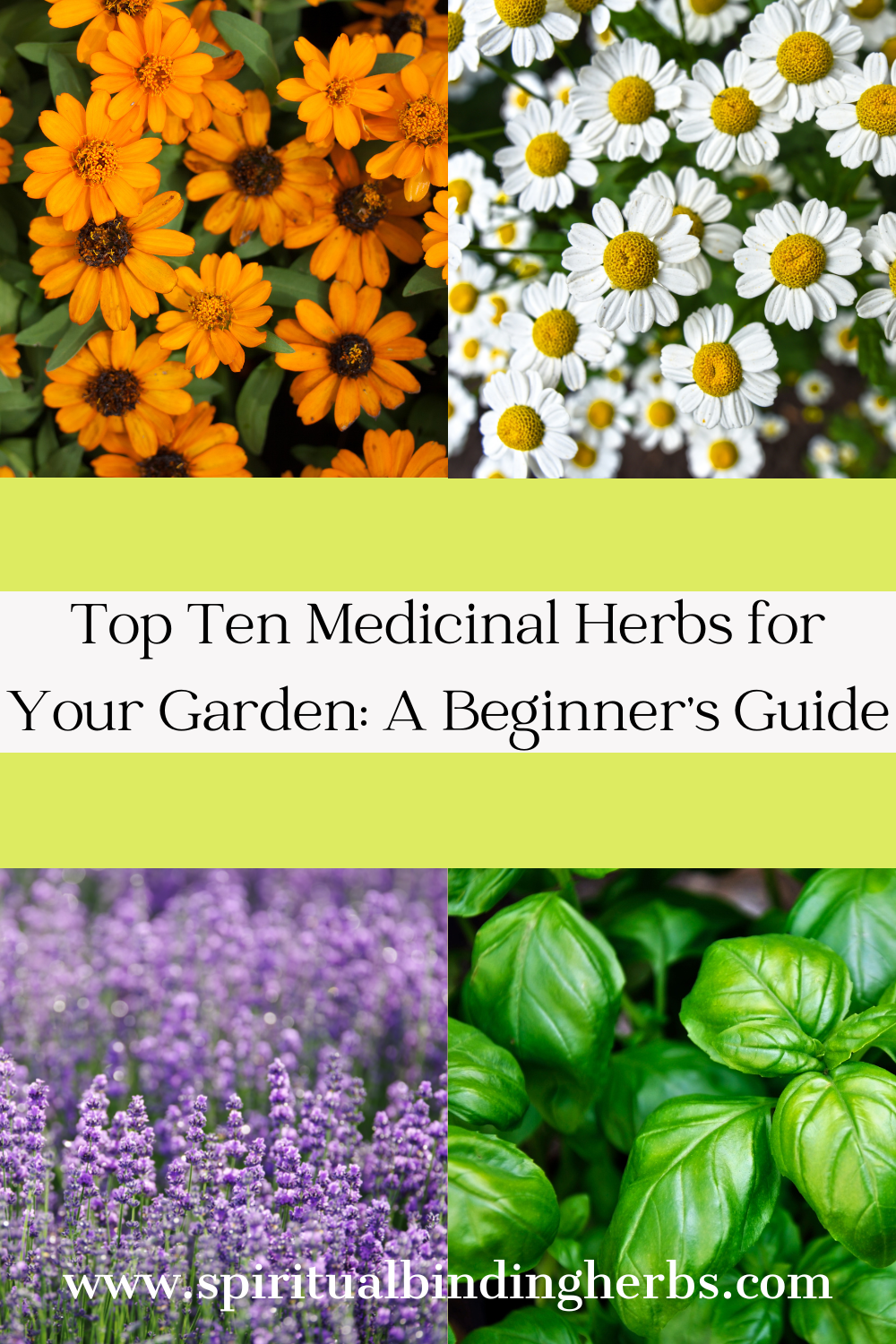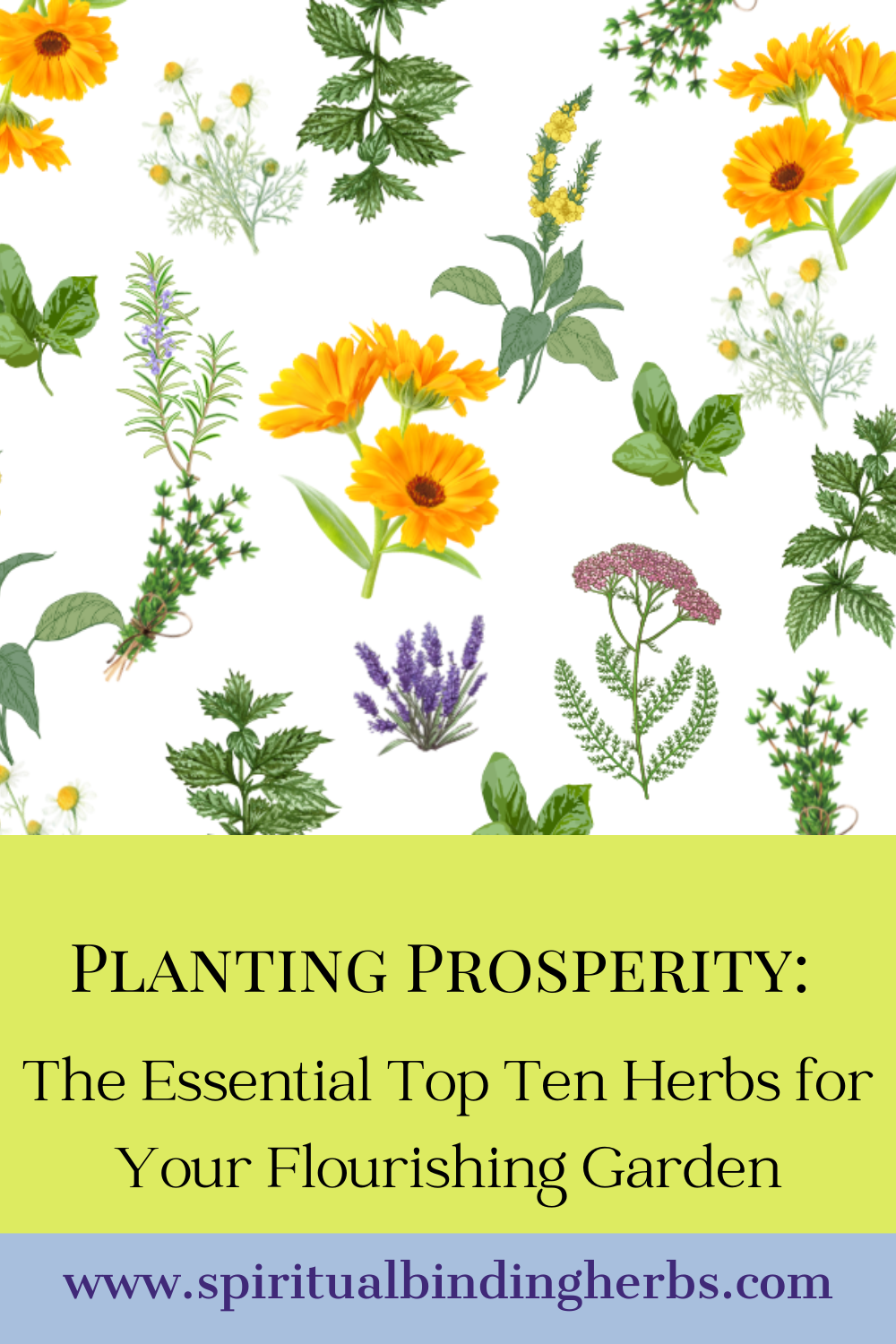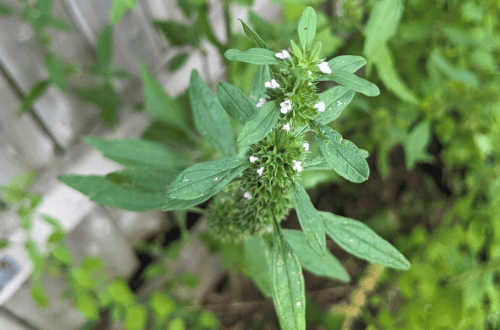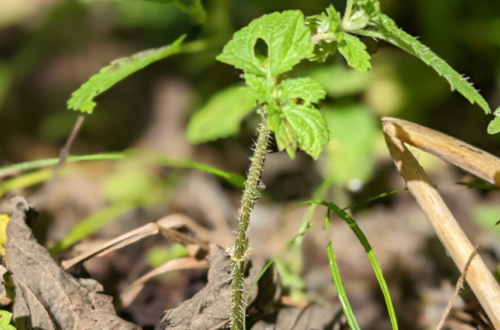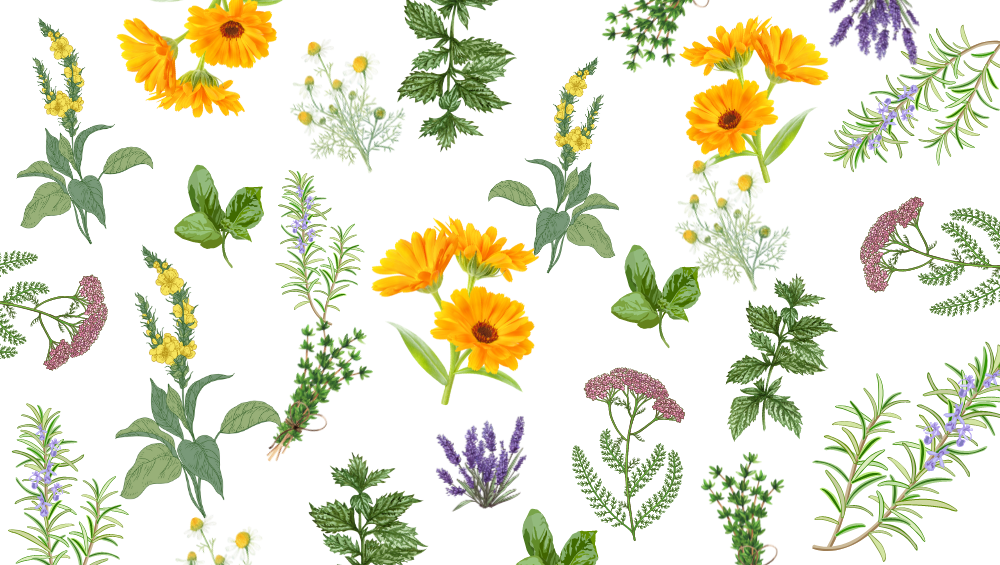
Top Ten Medicinal Herbs for Your Garden: A Beginner’s Guide
Embarking on an herbal journey?
Explore our list of the top ten medicinal herbs for your garden, even if you’re a beginner with limited space. Discover their growth habits, medicinal benefits, and tips for cultivating them. Dive into the world of herbs that are not only great for your health but also a treat for pollinators!
These ten plants have medicinal properties that are relatively safe for use, but as with anything used medicinally, please double-check that any medications you take do not cause any interactions or reduce the effectiveness.
It’s important to emphasize that I cannot provide medical advice. It’s crucial to consult a qualified healthcare professional for any health concerns or medical inquiries. My responses are meant to provide general information and insights but should not be taken as a substitute for professional medical guidance. This information is not meant to diagnose or treat.
Our list of the top ten medicinal herbs for your garden
First, let us start with the one plant in this list that should be grown directly in the ground, Mullein. Now, is there a chance this plant will make it in a pot? Well, I don’t know. I’ve yet to see it done, but that doesn’t mean it can’t be done.
- Mullein (Verbascum Thapsus)
Mullein (Verbascum Thapsus) is an excellent expectorant and is great for clearing the lungs. Mullein grows in dry, rough soil – often along roadways. Mullein is exceptionally easy to grow, and once you plant your plot, it will keep returning year after year.
Since this is a great herb for the upper respiratory system, there are a few ways to consume it; tea is my number one. Otherwise, tinctures are great if you need quick and easy. You can also use Mullein as a smoke blend, mixing with other herbs such as Lavender, rose, and Skullcap.
I have never witnessed Mullein grow in a pot, but that’s not to say it isn’t possible. So, if you want to try growing this beauty but short on space, I would encourage you to try it in a pot.
- Rosemary (Salvia Rosmarinus)
Rosemary (Salvia Rosmarinus) has many external and internal benefits. Aromatically, Rosemary can help to calm the soul; it is also an excellent option for a hair rinse or leave-in treatment to help promote hair growth.
One of the ways I like to incorporate Rosemary into my day is by adding a few springs to my water to help with mental clarity. If you want a quick infused water recipe, check out the one I use here.
Rosemary is also called “dew of the sea” due to its origins on the rocky coasts of the Mediterranean. If you can grow it year-round, it produces lovely blue flowers. Since we have pretty cold winters here in the Midwest, I have always grown my rosemary plants in pots.
Rosemary is antispasmodic and anxiolytic, so it works wonders for inflammation, muscle spasms, improving mood, and lifting anxiety. Rosemary prefers it dry and warm, so water sparingly; otherwise, you risk the opportunity for root rot to happen.
- Calendula (Calendula officinalis)
Calendula (Calendula officinalis) is one of my favorite flowers to grow; the nice thing is you should only need to sow the seeds one year. Crops should come back year after year without much effort, but they will spread quickly, so give them enough room if not growing in pots.
Calendula is also great for our pollinator friends. So, if you don’t plan to use them medicinally, their beauty and ecosystem support is enough reason to grow some! Calendula is also a symbol of the sun and fire.
If you are looking for some ways to use medicinally, Calendula salve is a great option for cuts, burns, and scraps. I have even had some success using it on bug bites. This is all due to its anti-inflammatory and antimicrobial properties. You can also use the petals for salad garnishes, natural “sprinkles” on cookies, and so much more! Let your imagination run wild, and let the colorful, creative juices flow.
- Lemon balm (Melissa officinalis)
Lemon balm (Melissa officinalis), ah, the sweet smell! This plant has very distinct, toothed leaves, and some can even start to take on the shape of a slight heart. If you need to identify Lemon Balm, the one tell-tail sign is that when you break open a leaf, it should have a strong lemon/citrus smell. Mint plants can also have a similar smell but should have more of that mint hint, especially when ingested.
It is a sedative, so taken in tea or tincture form is a great option if experiencing trouble sleeping and relaxing. One of my favorite tincture combinations for a sleep aid is Catnip and Lemon Balm. The plant also has digestive, carminative, and diuretic actions.
I have had luck planting directly in the ground or a pot, but never from seed. Letting Lemon Balm go to flower will produce beautiful and dainty light-colored flowers. I use all above-ground parts and will make tinctures out of all of these parts. Another quick way to use it is by infusing fresh water or tea.
- Yarrow (Achillea millefolium)
One of my favorite mythical stories on Yarrow is about Achilles. It is said that Achilles’ mother bathed him in Yarrow to help protect him, but his heel was his demise because this was the one spot where his mother held him and dipped him in the Yarrow. This was the only place on his body that did not touch the Yarrow. Hence the Latin name for Yarrow, Achillea millefolium.
Yarrow can help to stop bleeding from an open wound. The flavonoids contained within the plant may help with digestion and have been found to have antispasmodic effects. Yarrow is fairly easy to grow from seed and, here in the Midwest, lasts well after the first snowfall.
Rabbits do love it, so I have learned to grow in pots or fenced-in. Year after year, you can expect more and more plants to grow, so it is great for a “sow it and forget it” garden area. You can harvest throughout the summer once you have a decent crop established. I also love that there are many color options, so let your heart go wild!
- Basil (Ocimum basilicum)
Not only one of my favorites to cook with but a favorite to grow. I am notorious for letting my basil flower; I think they are so beautiful! Basil creates these beautiful clusters of flowers ranging from delicate Whites to hues of purple. Basil grows very well in pots and, with the proper care, can last many years to come. If you want to cultivate for medicinal purposes, the suggested or most used Basil is Tulsi Basil.
Tulsi basil is an adaptogen, so it will help the body adapt to stress and support not only the physical body but the spiritual one as well as overall well-being. It is also an anti-inflammatory and antioxidant. Basil may also help with respiratory, cardiovascular, and digestive health. Some studies have also noted that Basil may also help with anxiety and improve mood.
Basil is a must in the household if you are looking for some spiritual production; it is said the plant will help repel negative energies. This also shows that Basil can be a great way to cleanse the energy around you when needed.
- Thyme (Thymus vulgaris)
Thyme is another herb that is probably better known as a cooking companion, but it has many great medicinal properties and is relatively safe for most to use. This tiny but mighty plant can produce delicate light-colored flowers, and the smell is divine!
Thyme has great antimicrobial properties and is possibly more effective than some prescription face solutions for acne. Also, it has great potential as an anti-inflammatory and antioxidant. Some of its components, such as thymol, have been shown to inhibit certain inflammatory enzymes, potentially reducing inflammation in the body.
This plant does well in pots and prune regularly for year-round harvest. If you need spiritual uplifting, look to Thyme to help provide courage and strength. Thyme can also provide us with much-needed clarity and focus on those days we need it the most. Some believe Thyme can enhance intuitive abilities and help individuals tap into their inner wisdom. It is also thought to have healing energies, promoting physical and emotional healing and overall rejuvenation.
- Catnip (Nepeta cataria)
This following summer, I had my Catnip plant grow to its full potential, and I noticed that if let go to bloom, the plant produces these dainty light purple flowers. My Catnip took two years to establish when direct sowing, so it may take a season for you to see the fruits of your labor. Catnip is also great potted, and the cats will enjoy this to its fullest.
Catnip is a great option if you want a nervine or something to calm the nerves. Due to its calming properties, Catnip has been used as a natural remedy to promote sleep and relieve insomnia. The essential oil in Catnip contains a compound called nepetalactone, a natural insect repellent. It may help keep mosquitoes, flies, and other insects away when applied topically or used in herbal preparations.
Some traditional uses of Catnip involve using it as a mild analgesic (pain reliever) for headaches, menstrual cramps, and other minor aches and pains. If you want to enhance psychic abilities in certain traditions, Catnip is believed to have the potential to enhance psychic abilities, intuition, and spiritual insight. It may be used in meditation or divination practices to facilitate a deeper connection to higher realms.
- Chamomile (Matricaria chamomilla)
Once I was able to see my Chamomile grow, it was such a milestone sight. The year before, the seeds did not produce, but they showed up the next year, and I was ecstatic. The taste of fresh Chamomile is much different than dried. The fresh plant has an intriguing green apple flavor but is also soothing in some ways.
Chamomile is a popular herb used for centuries for its potential medicinal benefits. It comes in two main varieties: German Chamomile (Matricaria chamomilla or Chamomilla recutita) and Roman Chamomile (Chamaemelum nobile). Both types are known for their soothing and calming properties.
Chamomile is widely known for its calming effects and is often used to promote relaxation and improve sleep quality. Drinking chamomile tea before bedtime may help reduce insomnia and improve sleep duration. Chamomile has been used traditionally to ease digestive discomfort, such as indigestion, bloating, and gas. It may also help alleviate symptoms of irritable bowel syndrome (IBS).
If you’re looking to attract a little abundance to your life, Chamomile is occasionally associated with abundance, prosperity, and positive opportunities in one’s life. It is also believed to encourage inner peace and serenity, helping individuals find a sense of calm amidst life’s challenges and uncertainties.
Although I had some trouble with direct sowing, growing Chamomile successfully in a pot is possible. You’ll want to harvest before the white petals droop downwards, and the flowers can be used fresh or dry.
- Lavender (Lavandula)
Now, I will say that out of all the herbs listed here, Lavender is the one that I have had a hard time learning how to grow. It has taken about four years, but some have better luck than I do. Once you understand the plant’s energies and intuitively know what it needs, you’ll have a life-long plant ally.
One of Lavender’s better-known medicinal benefits is its calming and relaxing effects. Its aroma is believed to help reduce stress and anxiety and promote a sense of well-being. Aromatherapy using lavender essential oil can be used for relaxation and stress reduction. The plant can also offer headache relief. Inhalation of lavender essential oil or topical application on temples and forehead may relieve some individuals’ headaches and migraines.
It’s important to note that while Lavender is generally considered safe for most people, some individuals may be sensitive or allergic to it. Always perform a patch test before using lavender oil or products containing Lavender, especially if you have sensitive skin.
Bonus freebee plants that you can find anywhere in nature:
Dandelion, Plantain, Red clover, Lamb’s quarter, violet, Goldenrod.
Embark on a fulfilling herbal journey with these ten medicinal herbs. Whether you’re a beginner gardener or short on space, these herbs offer a gateway to holistic well-being and a deeper connection to nature. Experiment with growing them in pots and witness their transformative effects on your health and environment. Remember to consult a qualified healthcare professional before using any herbs for medicinal purposes.
It’s important to note that while there is promising research on many of these potential benefits, more rigorous scientific studies are needed to establish the effectiveness and safety of various health conditions. If you’re considering using plants for their medicinal properties, it’s advisable to consult with a healthcare professional, especially if you have underlying health conditions or are taking medications.
Wishing you love, light and inner peace babes ✌🌈✨💜
- Understanding the Different Types of Magnesium and Their Benefits
- How To Make Herbal Preparations: A Beginner’s Guide to Making Magical Herbal Remedies
- Exploring Herbalism: A Beginner’s Guide
- Unlocking SSRI Medication: How They Work and Herbs You Should Avoid
- Understanding Anxiety: Causes, Symptoms & Natural Relief Techniques
